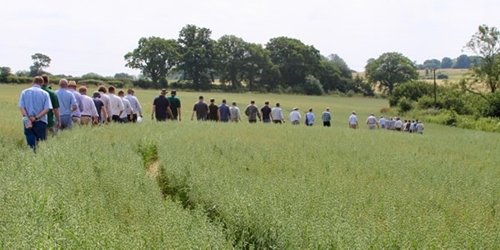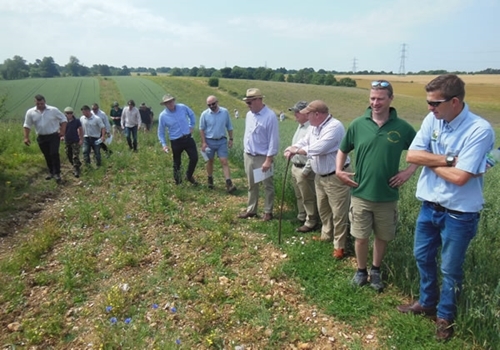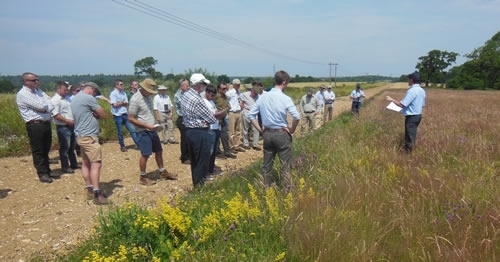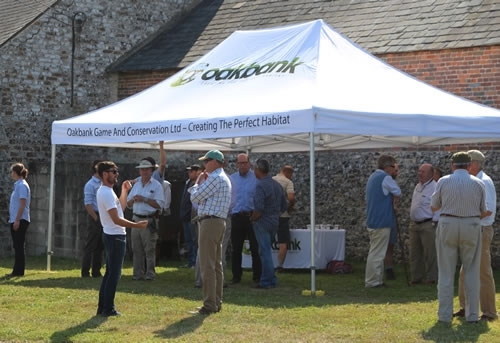By Tim Furbank, Director at Oakbank Game & Conservation
On Thursday 6th July the Oakbank team hosted an open day at Rotherfield farms to show how the habitat work being undertaken is integral to the grey partridge reintroduction project.

In temperatures of over 30°C a large group of farmers, keepers and grey partridge enthusiasts from as far afield as Cornwall and Romania, joined Dr Francis Buner, who oversees the project for the GWCT, Albert Hess, who is responsible for establishing and managing the habitats on the project area, and Tim Furbank from Oakbank, who supply the seed and agronomy/management advice, on a walk to look at and discuss the successes and pitfalls of grey partridge reintroduction.
With few trees and little shade on the partridge area it got so hot that the team of keepers from Conholt Park had to take their ties off!

Obviously predator control featured high on the agenda and Francis reiterated the importance of good practice when it comes to trapping and particularly the use of the new GWCT designed breakaway snares.
Albert explained the change of mindset that had to occur for the farm staff to realise that the wildlife habitats needed managing as efficiently as the farm crops and some of the issues that they had to overcome in terms of weed-burden and managing narrow strips.
All of the habitats we looked at were ‘managed’ habitats, from wild bird seed mixes that doubled up as brood rearing covers in the second spring to lapwing plots that then became over-winter turnip and mustard plots; from autumn to spring cultivated margins for arable plants; from extended over-winter stubbles to wild flower meadows.

Beetle banks had been used to break up larger fields and the farm had planted shrubs at 100m intervals along the beetle banks to create micro habitats within the fields. Not only were these shrubs used as shelter by the partridges but other declining species such as whitethroat and yellowhammer also use them regularly.
The wild bird seed mixes looked magnificent in their second summer with kale, sweet fennel, chicory and sweet clover dominating and providing a secure, insect-rich habitat for pheasant and partridge broods as well as over-head cover for the lapwing chicks that hatched on the fallow plot adjacent.
The extended over-winter stubbles were sown with a winter cover cop mix of vetch and oil radish, which delivered more cover than a naturally regenerated stubble. However, where the cover crop was patchy there was quite a high weed burden, which was of some concern for the farm, although most of the weeds will be easy to control in the following crop.
Of greater concern was the build-up of certain weed species in some of the margins and considerable debate was had about whether creeping thistle is a problem in a brood rearing crop? I think the overall consensus was that an amount of creeping thistle or ragwort is not harmful to chicks so, as long as it is controlled in the adjacent arable crops don’t worry too much, provided other beneficial species are also present.

The wild flower meadow and margins looked fantastic and we explained how they had been improved dramatically in terms of species diversity and wild flower distribution by cutting and baling the cuttings over the last 3 years. From predominantly grass based swards the flowers are now flourishing and delivering far more for insects, birds and mammals.
At the time of writing it looks as though all of the habitat management and predator control is paying off as several decent broods of greys have already been spotted! Fingers crossed the weather remains benign!
For more information on how to establish high quality habitats specifically developed for grey partridges, visit the Oakbank Game & Conservation website.